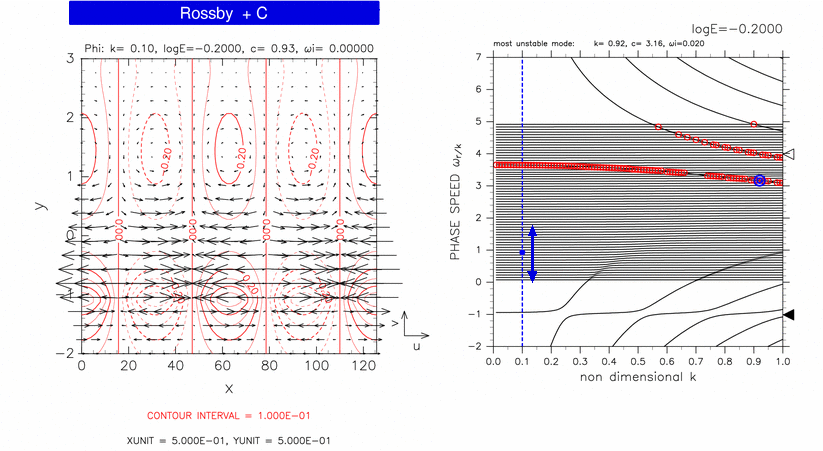Figure 3-9 (left panel) shows the typical horizontal structure of continuous modes for log E=-0.20, c ≤ 1.72. A blue filled circle in right panel indicates the position of the mode. In this case, an equatorial Rossby wave (Rossby) like structure and the structure of a continuous mode (C) are observed.
The critical latitude of the mode shown in figure 3-9 is y=-1.07. The amplitude peak of geopotential at y=-1.10 shown in the left panel corresponds to the structure of continuous mode.
An amplitude peak of geopotential at y=1.60 is considered to be caused by equatorial Rossby mode. Since the dispersion curve of the mode shown in figure 3-9 exists between dispersion curves of equatorial Kelvin modes and westward mixed Rossby-gravity modes, equatorial Rossby modes is only candidate that produces the amplitude peak of geopotential at y=1.60. The geostrophic structure at y=1.60 shown in the left panel is also consistent with the existence of an equatorial Rossby mode. For c ≤ 1.72, structures of equatorial Rossby mode weaken as the decrease of c and structures of continuous modes dominate.

Figure 3-9: Horizontal structure of a continuous mode for log E=-0.20, k=0.10, c=0.93 (left panel). The position of the mode in dispersion curves is indicated by a blue filled circle in the right panel. Contours and vectors in the left panel indicate &phi and velocity field, respectively. Contour intervals are 1.00 × 10-1. Other symbols in the right panel are same as table 1.